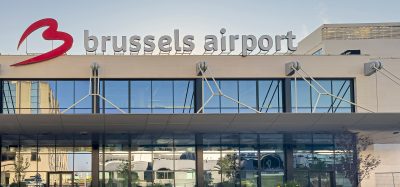The Joint Undertaking takes off
- Like
- Digg
- Del
- Tumblr
- VKontakte
- Buffer
- Love This
- Odnoklassniki
- Meneame
- Blogger
- Amazon
- Yahoo Mail
- Gmail
- AOL
- Newsvine
- HackerNews
- Evernote
- MySpace
- Mail.ru
- Viadeo
- Line
- Comments
- Yummly
- SMS
- Viber
- Telegram
- Subscribe
- Skype
- Facebook Messenger
- Kakao
- LiveJournal
- Yammer
- Edgar
- Fintel
- Mix
- Instapaper
- Copy Link
Posted: 6 June 2012 | Mark Glover, Commissioning Editor, International Airport Review | No comments yet
SESAR Joint Undertaking, the body which manages the technological wing of the Single European Sky, will soon release an updated version of its ATM Masterplan, which maps out Europe’s future Air Traffic Management system. Mark Glover from International Airport Review spoke with Executive Director Patrick Ky to get an insight into where the initiative is at this precise moment.
Mark Glover: Are you on track to meet the 2020 deadline for the implementation of a mod – ernised ATM system in Europe? Will there be a Single European Sky as planned?
Patrick Ky: SESAR will deliver on time. We will provide the appropriate tools to achieve the European Union’s high level goals.
But bear in mind that the SESAR programme is a very ambitious one, which will benefit the entire Air Traffic Management system in Europe.
The SESAR technology will be implemented step wise. We are starting now, with important changes developed by SESAR such as Extended Arrival Management and new Air Traffic Flow Management Operations which will be deployed in 2012/2013.
SESAR Joint Undertaking, the body which manages the technological wing of the Single European Sky, will soon release an updated version of its ATM Masterplan, which maps out Europe’s future Air Traffic Management system. Mark Glover from International Airport Review spoke with Executive Director Patrick Ky to get an insight into where the initiative is at this precise moment.
Mark Glover: Are you on track to meet the 2020 deadline for the implementation of a mod – ernised ATM system in Europe? Will there be a Single European Sky as planned?
Patrick Ky: SESAR will deliver on time. We will provide the appropriate tools to achieve the European Union’s high level goals.
But bear in mind that the SESAR programme is a very ambitious one, which will benefit the entire Air Traffic Management system in Europe.
The SESAR technology will be implemented step wise. We are starting now, with important changes developed by SESAR such as Extended Arrival Management and new Air Traffic Flow Management Operations which will be deployed in 2012/2013.
Also, among the next steps, one of the most challenging will be the integration of aircraft and ground systems. In particular, moving from 1930s voice technologies to an email-like system. To interconnect between aircraft and ATC computers will require substantial investments which we are well aware of and are working on it right now.
MG: SESAR is indeed a massive programme. Have you had to narrow down its priorities?
PK: When the SESAR programme was first defined, all of its components were on an equal level. Subsequent work has highlighted the fact that part of the work needed to be organised in a sequential order if we want to deliver fully workable solutions. There is also a question of available resources. Some 2,500 people are working on the programme throughout our members’ network right now and we don’t want to grow beyond that – we want to make sure that SESAR remains manageable and productive in terms of R&D results.
Therefore, we developed the following priorities:
- Airport integration and throughput
- Conflict management and automation
- Moving from airspace to 4D trajectory management
- Network collaborative management and dynamic/capacity balancing
- Traffic synchronisation.
The curbing of traffic growth forecasts in recent years has released some of the pressure in terms of building up more capacity. Now we can focus more on the quality of service and deliver, as a general priority, technologies that will improve the reliability (including the accuracy) and the flexibility of air traffic management.
MG: Can you elaborate a little on what that means for airports?
PK: Some 30 per cent of SESAR’s R&D activities are directly related to airport operations. From an airport perspective, SESAR is primarily about rationalising operations so as to make the best possible use of available capacity.
MG: Do you think the changes which SESAR is preparing will easily rally support from air transport actors in general, and airports in particular?
PK: We are fortunate to enjoy an excellent buy-in from airlines, manufacturers, air navigation services providers, and even their employee organisations. Airports were less active in some ways, but we have in the meantime signed a contractual agreement with ACI-Europe, which is helping us explain to the airport community that SESAR will be beneficial for their operations as well. We are now in a much better situation than we were two years ago.
MG: Aren’t you afraid that air transport operators will balk when it comes to actual investments?
PK: No one can afford technology just for the sake of it, especially in times where many governments and organisations are dealing with imperative budgetary issues. We at SESAR are devoting considerable energy to make sure that we fully understand and take on board the business challenges which the different sectors of the air transport system are facing right now. We believe that we are coming up with appropriate responses, which will be outlined in our updated ATM Masterplan, due for publica – tion after the summer.
MG: What will it cost airports to meet SESAR requirements?
PK: In the SESAR programme definition phase, it was estimated that European airports would need to invest a grand total of €550 million for the deployment of the SESAR technology. Since then, SESAR has enhanced the business model, with the support of the international consultant McKinsey, to include both the direct cost of the programme and the indirect spending linked to increased passenger numbers (luggage handling, gates) over the period 2010-2030.
SESAR-related investment is now estimated at around three per cent of all planned airport investments. The payback period for SESARrelated investments would be approximately five years, as increased traffic will generate increased revenue and income. But please note that these figures are likely to be fine-tuned in the updated Masterplan which we are currently completing and which will be published in the coming months.
MG: Can the cost be justified for every airport? Or will the major hubs benefit the most?
PK: SESAR will benefit the European air transport system as a whole. Impact on individual airports will vary: the airports with the most severe capacity constraints today will enjoy the most substantial benefits. But all airports will benefit from new technologies such as System Wide Information Management (SWIM) and share the environmental benefits of SESAR, which include reduced CO2 and noise emissions.
MG: How big an obstacle is sovereignty (national airspace) to projects such as SESAR? What do you think needs to be done to address this?
PK: We don’t have any issues with sovereignty. First of all, SESAR is embedded in the Single Sky Initiative, which is fully supported by all 27 Member States of the European Union. Second, if you are referring to defence issues: we bring benefits, as we are actively co-operating closely with military representatives and developing solutions that will allow a more flexible use of airspace to facilitate the coexistence of civil and military operations.
Biography
Patrick Ky was appointed Executive Director of the SESAR Joint Undertaking in October 2007. Since then Mr Ky has driven the set-up and execution of SESAR, Europe’s ambitious air traffic management modernisation programme.
One of his main priorities is the inclusion of all relevant air transport actors in this Public-Private Partnership. As a result, more than 2,000 experts from 80 companies in Europe and worldwide are actively contributing to the 300 projects of the SESAR work programme. Furthermore, Mr Ky focuses on achieving early results with immediate benefits for the aviation industry as well as the development and validation of SESAR’s new technologies and procedures in operational environments.
Prior to SESAR, Mr Ky held different managerial positions in the French Civil Aviation Authority, a private consulting company, and Eurocontrol. Between 2001 and 2004, he was the ATM rapporteur for the Advisory Council for Aeronautics Research in Europe (ACARE). In 2004, he joined the European Commission to work on SESAR. In total, Mr Ky has more than 21 years of work experience in Civil Aviation.
A graduate from Ecole Polytechnique and the Civil Aviation Engineering School in France, Mr Ky also holds degrees in economics from Toulouse University and Massachusetts Institute of Technology.
Issue
Related topics
Air traffic control/management (ATC/ATM), Airside operations


















